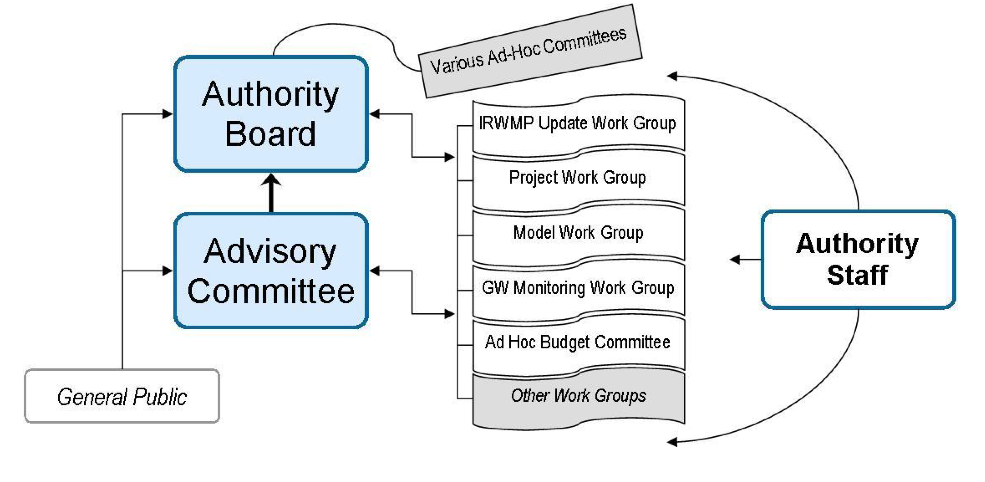Governance
Kings Basin Water Authority
Background
The BAP made significant progress by working together on regional water supply issues but realized that the involvement of other stakeholders in the basin would be necessary if regional solutions to all of the basin’s water resources challenges were to be developed. BAP participants moved to solicit wider stakeholder participation which led to the formation of the Upper Kings Water Forum (Water Forum) in 2004 to coordinate water resources planning in the upper basin. The Water Forum embarked on developing an IRWMP for the upper basin region to improve water management, reduce conflicts, protect water quality, and ensure sustainable resources management through regional cooperation. The Upper Kings Basin IRWMP was completed in 2007.
In 2009, the Water Forum evolved into a more formal organization governed by a Joint Powers Agreement (JPA). The new Upper Kings Basin Integrated Regional Water Management Authority soon attracted several additional organizations located in the lower Kings Basin which led to the extension of the plan boundary to cover the bulk of the water agencies located throughout the entire Kings Basin. In response to confusion between geographic and entity name caused by this expansion, today the Authority goes by the informal/branded name of Kings Basin Water Authority, but has retained its much lengthier and confusing legal name which would be very difficult to change.
In 2012, the Authority included 17 official members and 37 interested parties and will likely continue to grow. Regional representation is diverse and includes city and county governments, non-governmental organizations and other stakeholders.
Governance Structure
The Authority is governed by a Board of Directors comprised of one representative for each Member agency. At a minimum, Member agencies are required to designate at least one primary representative and one alternate. Primary representatives are typically elected officials. Each Board member has one vote. Interested parties do not need to execute the JPA, but are governed by its provisions. Interested parties are nonvoting, but have an opportunity to provide direct input into nearly all Authority activities through committee and work group participation.
The Advisory Committee (Committee) is the advisory body of the Authority and reports directly to the Board of Directors. The Committee is the only standing committee defined by the JPA and includes one representative from each Member and Interested Party. Each Member and Interested Party has one vote on the Committee. The Committee provides advice to the Board, but has no authority to take action that binds the Authority.
Several Work Groups have been formed, and more may be formed in the future, to address specific topics. Work Groups meet on an as-needed basis, but most remain fairly active. The Work Groups present results from their work at regular Advisory Committee meetings. Any member or interested party can volunteer to serve on a Work Group. Volunteers generally serve as long as they wish or until a specific project is completed. Time commitments are typically no more than a few hours per week, since most volunteers also work full time for other agencies or organizations.

